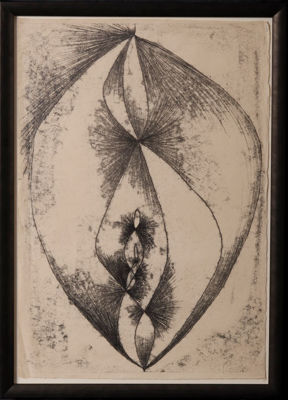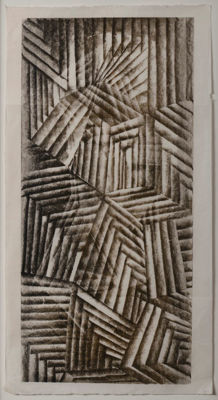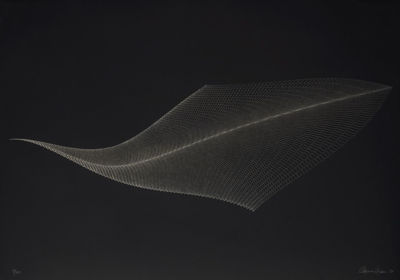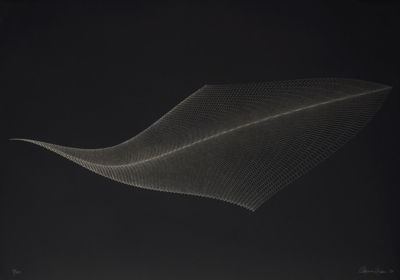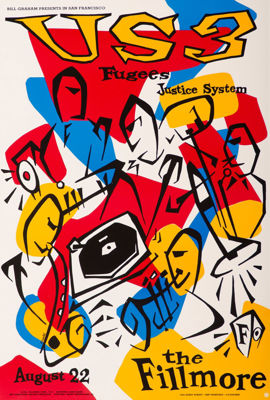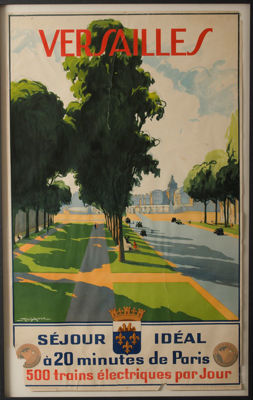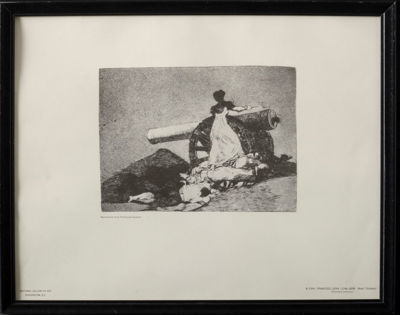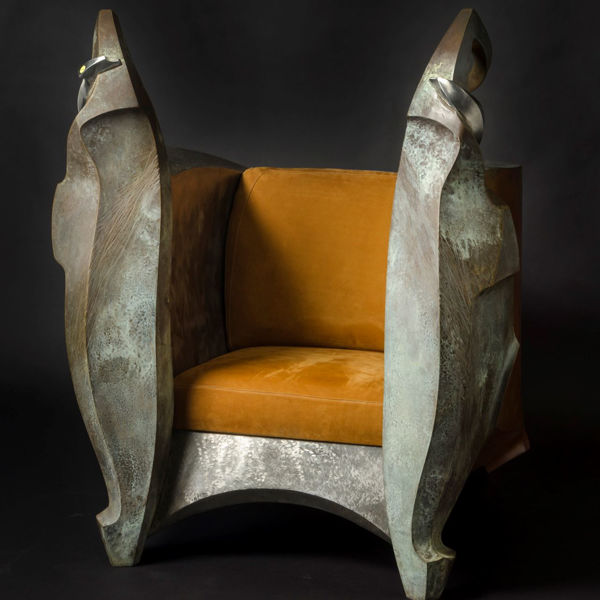Photography and Prints
Title: Untitled
Zeng Hao’s painting style of small figures and objects floating in space on large canvases is a signature of his. Some call him unconventional, but he was labeled a “New Imagist” by others. Imagism was a post World War II art movement originating in Chicago and based in fantasy. Hao’s work is seen as a revival of this sort of art, what with its other-worldly layout and two dimensionality. The scale of the figures and the distance between figures on the canvas is seen as portraying the emptiness of life and the disconnect between time and space. He paints very simple everyday objects in isolation, which adds to the intriguing lack of context that pervades his work.
Title: Untitled
A self taught artist, Kiki Smith received no formal training. She worked with and learned from a New York-based cooperative called Collaborative Projects in the 1970’s. Her pieces look at topics such as anatomy, self portraiture, nature, and sexuality. She briefly studied to be an emergency medical technician in 1985, which inspired her interest in human anatomy. This interest is reflected in Untitled 2, a lithograph of kidneys.
Title: Untitled
Agnes Denes is difficult to categorize. She works with a wide range of mediums and has many disparate influences. Denes is known for her innovative use of metallic inks and other non- traditional materials in creating a prodigious body of exquisitely rendered drawings and prints that delineate her explorations in mathematics, philosophy, geography, science and other disciplines. Her sheer breadth and range of work is impressive in its own right, but each piece also exhibits an attention to detail beyond what you would expect from one working in so many mediums. This print is very simple, but the definition of every brick in this pyramid creates a dizzying yet clean and simple effect.
Title: What Courage!
Reproduction of an etching and aquatint. From National Gallery of Art, Washington, D.C.
Title: Zertretene
Zertretene. – Leichnam und Frauenakt am Pfahl (The Downtrodden - Corpse and Nude Woman at Post) Medium: Line etching, drypoint, aquatint and burnisher Year: Date of Impression 1963-1972. Date of Plate 1900. Edition : Posthumous impression Publisher: Alexander von der Becke. Von der Becke two-line Munich blindstamp lower right corner of image. References: Klipstein 48, Knesebeck 49ter-c/c Size: 9-1/4 x 24-3/8 inches(239 x 628 mm) Description: Although very similar in composition to From Many Wounds ..., this composition was a direct result of Kollwitz’s concern over the marginalization and ghettoization of the German working class. Originally the work had an additional panel to the left that contained the contemporary figures of a man, woman and child. It was meant to convey that their plight was one of poverty from birth to death with no chance of escape. The allegorical figures shown in this version once again depict the worker as martyr, only this time there is an additional figure stepping from behind the bound woman who confronts the viewer directly. She extends her hand toward the viewer in inquiry and challenge asking “What will you do to change this?”







